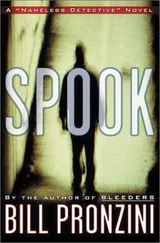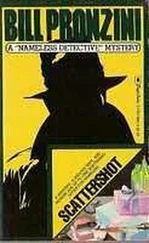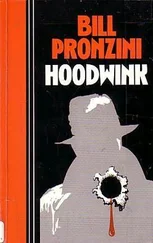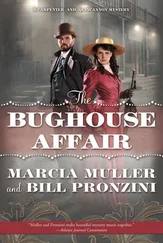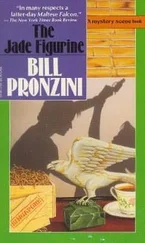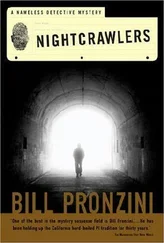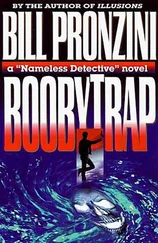“Man,” she said.
“Yeah,” I said.
“So what do they do? Use bandages and stuff like the Egyptians?”
“Oh, they’re a lot more sophisticated than that. They drop the body into some chemical brew for a few days, formaldehyde and salt and God knows what else, and when it’s all dried out they treat it with scented oils and then bind it in linen topped with polyurethane so the cloth won’t deteriorate.”
“Then what? Don’t be telling me they seal it up in a sarcophagus?”
“Just what they do. Only they call it a mummiform. You can get one made out of bronze that resembles King Tut’s. Or made out of silver or gold, and crusted with jewels. You can even get an art deco coffin, any design — engraved likeness of yourself or your family members, even.”
“Dag,” she said.
“Yeah,” I said.
“Where do they put the mummies afterward?”
“Private crypts and mausoleums. Or you can buy a niche in Forever Lasting’s Chamber of Eternal Rest.”
“What’s that?”
“The guy who runs this outfit, Joseph Im-tep—”
“Joseph what?”
“Im-tep. Real name Joseph Schultz, but he took an Egyptian name when he founded Forever Lasting.”
“... You making that up.”
“Do I sound like I’m kidding here?”
“Joseph Im-tep. Wonder why he bothered to leave out the ‘ho’?”
“What ‘ho’?” I said, which made me sound like an Englishman on a fox hunt.
“You know, Im- ho -tep. Mummy’s name in the movie.”
“Let’s not get started on that again. This Im-tep guy owns some property in the Sangre de Cristo Mountains in New Mexico, claims to have his Chamber of Eternal Rest built inside a cave up there — niches carved into the rock where the mummified bodies can quote enjoy blissful solitude for all eternity unquote.”
“What’s all this cost?”
“Well, let’s see. You can get your dead body mummified without any of the trappings for under ten thousand.”
“Dollars?”
“Dollars. If you want a funeral and flowers and one of the cheaper airtight coffins, the tab’ll run you around twenty-five thousand. The fancy gold-and-silver mummiforms cost a hundred and fifty grand or so. And if you want a niche in the Chamber of Eternal Rest, that’s another seventy-five hundred.”
“Off da hook!” she said.
“Yeah,” I said.
“And rich people actually go for this?”
“Rich and not so rich. A lot more than you’d think.”
“What’s the big attraction?”
“Im-tep’s selling it as a kind of immortality. Mummifed bodies last forever, at least in theory.”
“Yeah, forever. If some dude with an archeology degree or a handful of tanna leaves doesn’t show up.” Tamara came over and perched a plump hip on the edge of my desk. “No way you be thinking about turning yourself into King Tut?”
“Me? Good God, no.”
“So how come you read this Forever Lasting book?”
“I didn’t read it. Kerry’s reading it.”
“She’s not?...”
“Just finds the subject interesting, she says. I’d divorce her if she let Paula Hanley talk her into contacting Im-tep, and she knows it. Paula’s the one who loaned her the book.”
“So that girl’s serious about getting mummified?”
“She is now. In the unlikely event she stays serious, she’ll probably want to design her own mummiform.” I had a mental image of a golden sarcophagus, elegantly and tastefully carved — and inside it, Mrs. Boris Karloff resplendant in linen bindings of shocking pink and bilious green, Day-Glo orange and fetching lavender.
“But you don’t think it’ll happen?”
“I’ll be astonished if it does. By next week or next month, Paula will be into something else — burial at sea decked out in United Nations flags, maybe. She’s not too well wrapped.”
Tamara laughed.
“What’s funny?”
“Pun you just made.”
“What pun?”
“‘Not too well wrapped.’ Neither was Im-ho-tep.”
I frowned. “You know I don’t like puns.”
“Well, it came out your mouth.”
“Unintentionally.”
“Right. You a man who doesn’t make puns on purpose, doesn’t even get ’em half the time.” She stood up and smoothed her new skirt. “You really want my opinion on this mummy business?”
“That’s why I brought it up.”
“Truth is, it leaves me cold.”
“I’m glad to hear it. Me, too.”
“How about we lay it to rest now? We done talked the subject to death.”
“Fine with me.”
She favored me with one of her funny little smiles. “Well then,” she said, “I guess that’s a wrap,” and went back to her desk and sat there chuckling to herself.
As much as I like Tamara, she can be strange sometimes. Not quite but almost as strange as Paula Hanley.
It was crowded at the San Francisco Zoological Gardens. Nonstormy Fridays are usually busy days, even at this time of year. Overcast, fog, and icy winds don’t keep visitors away; if they did, the zoo would go out of business inside a year. Its seventy-some acres are spread out so close to the ocean you can hear breakers lashing the seawall across the Great Highway which forms the zoo’s western boundary. Most days out here, you get a brisk sea wind; most days the afternoons are chilly even when the sky is stripped clean of clouds or mist. This one was no exception. Patchy sun and cloud scuds, but offshore a huge fogbank was getting ready to unroll again like a giant fuzzy carpet, and the wind blew sharp and cold. I had my overcoat and gloves on, and Emily was bundled into a heavy wool coat, mittens, scarf, and knitted cap, but neither of us minded the cold or the bulky outfits. She was smiling, and there was a skip in her step, both very good to see.
The zoological gardens have expanded quite a bit since a financier named Herbert Fleishhacker contributed enough money and animals to open them in the early 1920s. Back then, and for some time afterward, they had been small and modest and known as Fleishhacker Zoo. Next door had been Fleishhacker’s Pool, the world’s largest outdoor saltwater swimming pool at a thousand feet long and a hundred-and-fifty feet wide, known locally as “Herb’s white elephant” since hardly anybody used it because of the weather and Ocean Beach being so close by. When the pool was finally shut down, the zoo took over the land and a lot more animals and exhibits were added. Today it’s one of the largest on the West Coast, with fourteen hundred animals and birds and dozens of grottoes, brushy fields and slopes, rush-rimmed ponds, and other areas simulating natural habitats.
If you want to see everything the zoo has to offer, you need a full day to prowl those seventy acres. In the three hours we had, the choices were somewhat limited. Emily was interested in birds, so the big aviary was a definite stop. So were Monkey Island and the Primate Discovery Center, the sea lion tank, the koala compound, and the Lion House.
We went to the aviary first, then wandered over to see if it was feeding time for the big cats. It wasn’t; all but one of the cages was empty, the animals still out back in their grottoes. We stopped in front of the occupied cage, where one of the Bengal tigers was pacing restlessly. We were the only two-legged animals on this side of the bars.
I knew the Lion House, the entire zoo grounds all too well. Several years back I had been hired by the Zoo Commission to investigate a rash of thefts of rare and endangered animals, reptiles, and birds that were being sold off to unscrupulous private collectors. I’d spent three long, cold nights patrolling the grounds in the company of two other watchmen before the case took an unexpected and violent twist: one of the watchmen was found murdered in a lion cage under bizarre circumstances. That night and the case’s resolution were still sharp in my memory.
Читать дальше

